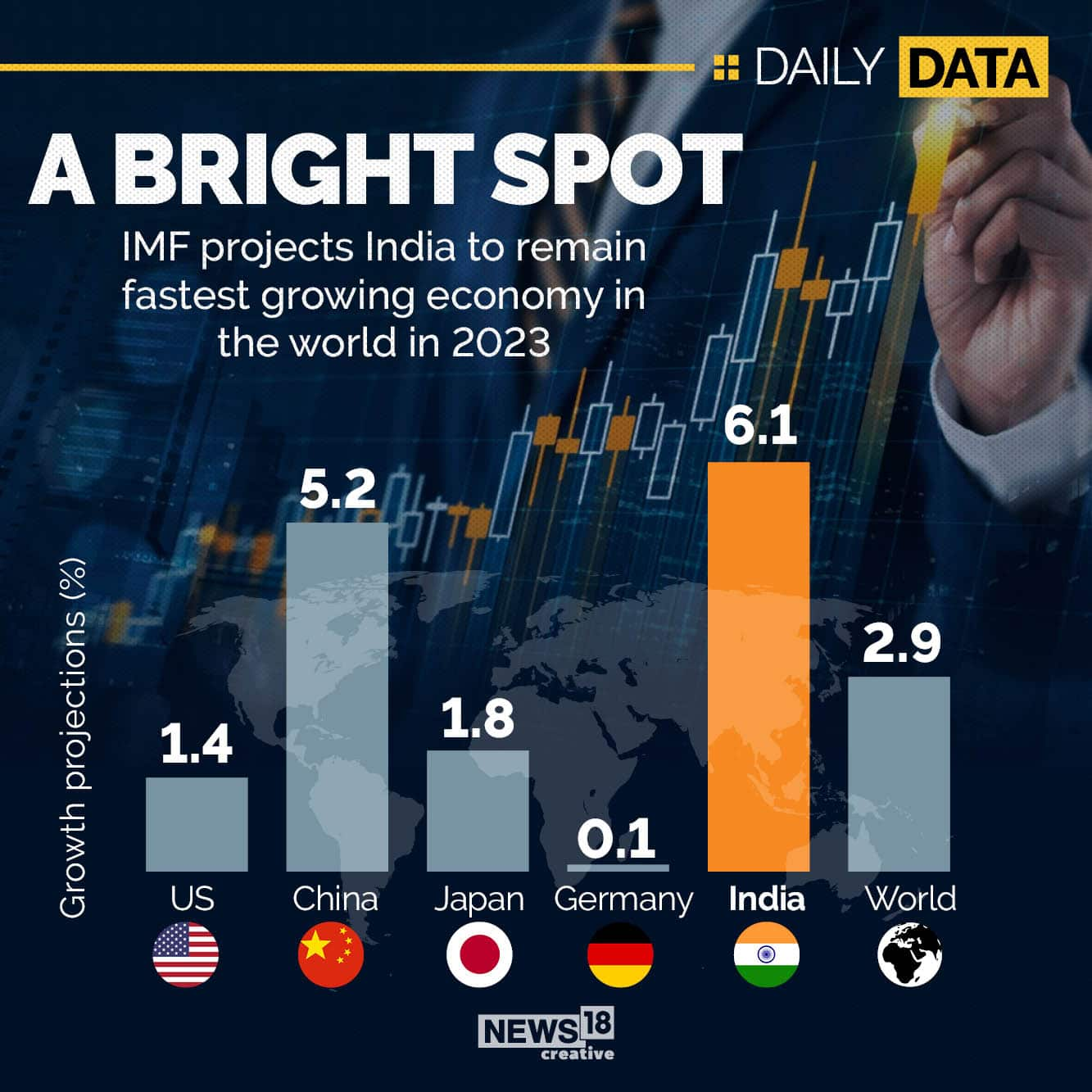



The International Monetary Fund (IMF) has retained its GDP growth forecasts for India for 2022-23 and 2023-24 at 6.8 percent and 6.1 percent, respectively.
Released on January 31 – a day before Finance Minister Nirmala Sitharaman presents the Union Budget for 2023-24 – the IMF said while the economy will slow down next year, it will subsequently pick up pace.
"Growth in India is set to decline from 6.8 percent in 2022-23 to 6.1 percent in 2023-24 before picking up to 6.8 percent in 2024-25, with resilient domestic demand despite external headwinds," the IMF said in an update to its World Economic Outlook report.

The IMF's estimate for India's growth this year is 20 basis points lower than the government's first advance estimate of 7 percent.
One basis point is one-hundredth of a percentage point.
For 2023-24, the Reserve Bank of India (RBI) in September had forecast a GDP growth of 6.5 percent. However, this could undergo a revision as early as next week when the central bank's Monetary Policy Committee announces its latest interest rate decision on February 8.
Meanwhile, the government's Economic Survey for 2022-23, set to be tabled in Parliament later today on January 31, is expected to provide a growth forecast for next year.
Although the IMF held on to its growth forecast for India, it made slight upward revisions for most other regions.
In 2023, the global economic output is now seen growing by 2.9 percent, up from the 2.7 percent forecast earlier. The forecast for the US for 2023 has been raised by 40 basis points to 1.4 percent, while that for China has been increased by a substantial 80 basis points to 5.2 percent.
| REGION | 2023 GROWTH FORECAST | 2024 GROWTH FORECAST |
| World | 2.9% | 3.1% |
| US | 1.4% | 1.0% |
| Euro area | 0.7% | 1.6% |
| Japan | 1.8% | 0.9% |
| UK | -0.6% | 0.9% |
| China | 5.2% | 4.5% |
| Russia | 0.3% | 2.1% |
| Brazil | 1.2% | 1.5% |
| South Africa | 1.2% | 1.3% |
Worryingly for China, the IMF said growth may fall to 4.5 percent in 2024 and settle at "below 4 percent over the medium term amid declining business dynamism and slow progress on structural reforms".
In its report, the IMF said economic activity was "surprisingly strong" in the third quarter of 2022 in numerous economies.
"Compared with the October forecast, the estimate for 2022 and the forecast for 2023 are both higher by about 0.2 percentage point, reflecting positive surprises and greater-than-expected resilience in numerous economies," the IMF said.
The IMF's forecasts assume oil prices will fall by 16 percent in 2023, while non-fuel commodity prices are expected to fall by 6.3 percent.
"Global interest rate assumptions are revised up, reflecting intensified actual and signaled policy tightening by major central banks since October," the report added.
The IMF expects global consumer inflation to drop sharply from 8.8 percent in 2022 to 6.6 percent in 2023 and then again to 4.3 percent in 2024.
"The projected disinflation partly reflects declining international fuel and non-fuel commodity prices due to weaker global demand. It also reflects the cooling effects of monetary policy tightening on underlying (core) inflation, which globally is expected to decline from 6.9 percent in the fourth quarter of 2022 to 4.5 percent by the fourth quarter of 2023," the IMF said.
"Still, disinflation will take time: by 2024, projected annual average headline and core inflation will, respectively, still be above pre-pandemic levels in 82 percent and 86 percent of economies," it added.
Discover the latest Business News, Sensex, and Nifty updates. Obtain Personal Finance insights, tax queries, and expert opinions on Moneycontrol or download the Moneycontrol App to stay updated!
Find the best of Al News in one place, specially curated for you every weekend.
Stay on top of the latest tech trends and biggest startup news.